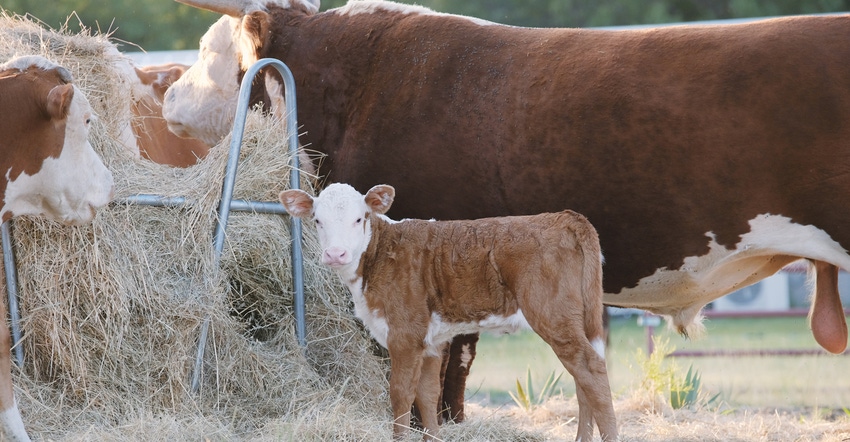Calculate hay quantity and winter-feeding loss.
July 6, 2021

Summer is a busy time of year for beef producers everywhere as fences need fixing, cows must be rotated, and hay needs to be made. There is another task that should be added to the to-do list: planning ahead for winter feeding. It may seem a bit premature, but now is the time to ensure enough hay or forages are put away for winter.
The first step in planning is knowing the quality of the hay you plan to feed and the amount you are going to need. Forage testing hay is an advantageous tool that allows producers to better manage their forages to meet their cows’ needs. Cows can eat about 1.1% of their body weight in neutral detergent fiber; this will vary slightly based on fiber digestibility.
That said, there are forages that will fill a cow’s stomach without meeting her nutrient requirements, and others that will more than meet her needs if she fills up on them, resulting in an overconditioned cow. These forages need to be used accordingly as part of a balanced ration — and producers cannot manage what they do not know.
Knowing the amount of hay your cattle require is also important. This goes beyond knowing that a cow can eat roughly 2% of her body weight per day in dry matter. It is important to take into account the average number of winter-feeding days for your region and figure in any storage or feeding loss. Regardless of your storage and feeding strategies, there will be some loss.
Figure how much is needed
Say you plan to feed 20 cows that weigh an average of 1,200 pounds each from Oct. 1 through April 15 (197 days) in a ring feeder with a panel and hay that was stored tarped on a rock pad. For this example, each cow should eat an average of 28 pounds of hay as-fed; due to the storage method, you can expect a 7% feed loss, and with the feeding method, you can predict a 6% loss in feed waste, requiring you to plan ahead to need 32 pounds per head per day. This means each cow would require roughly 3.3 tons of feed for the winter-feeding season, or 64 tons for the entire group.
For many farms maintaining a consistent number of cattle, forage needed doesn’t change much from year to year, unless changes are implemented. Understanding the increasing nutritional needs of the cows during advanced pregnancy stages during the winter weather will allow for intentional harvest of hay to meet increased nutritional needs without further supplementation. Rations can then be formulated once forages are harvested, inventoried and tested.
Most farmers will want to have some level of surplus in case of shortages. The amount of surplus will vary from farm to farm, depending on the farmer’s tolerance of risk.
Planning for winter feeding during the summer months may seem tedious. However, taking the time now to ensure you have enough forage to last the winter can help save time and money in the long run. In addition, the University of Wisconsin-Madison Division of Extension Livestock Team has a forage inventory tool on the new topic hub at livestock.extension.wisc.edu that can be used to help producers organize their forage inventory and cattle needs.
Cauffman is the Extension ag educator in Grant County, Wis.
You May Also Like



